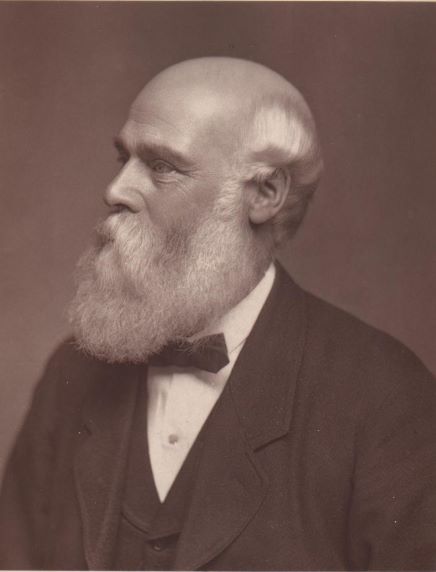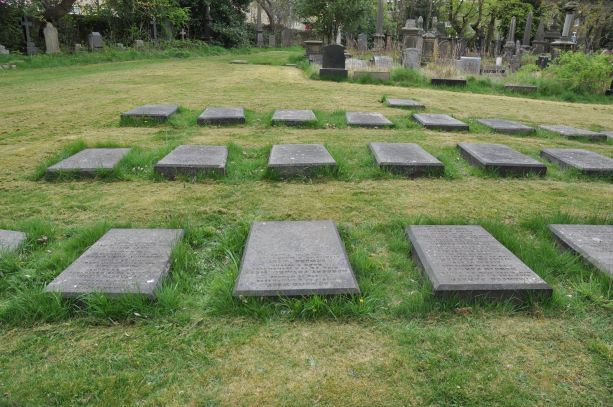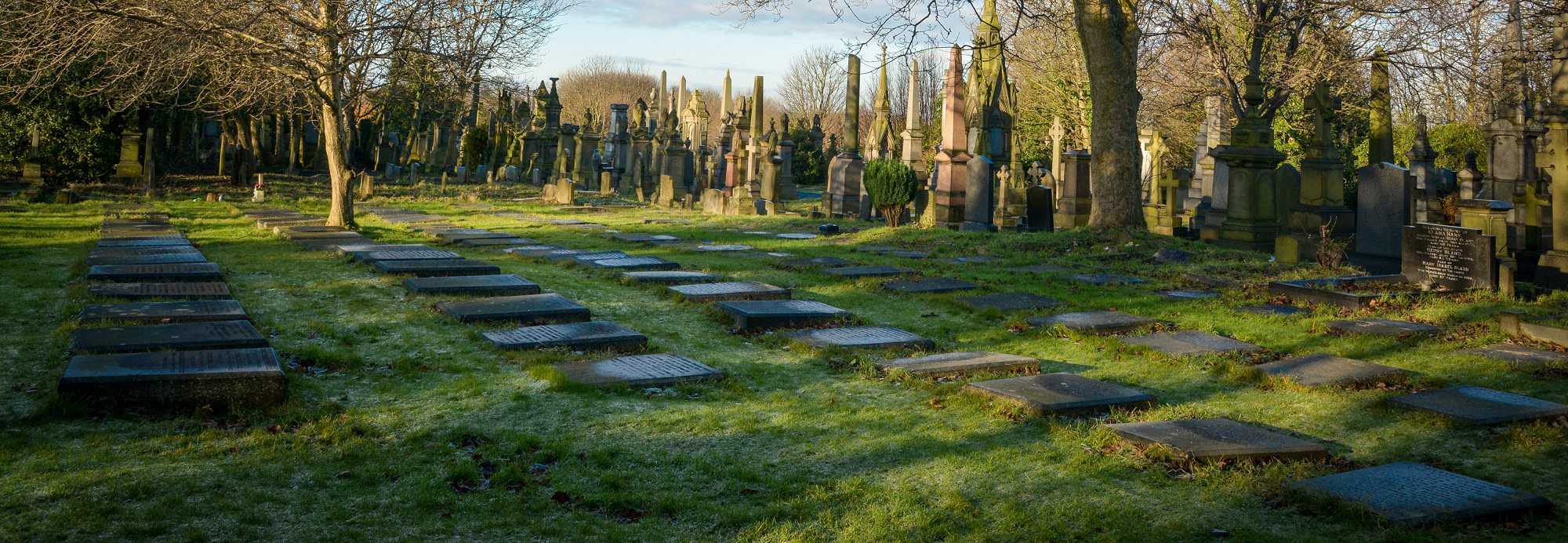Edward West

He was born on 29 May 1821 in Sculcoates, Hull, Yorkshire, a Quaker birth, to tanner Edward West and his wife Ann née Ellis, sister of James Ellis of Old Queen’s Mill, Bradford. He came to Bradford in 1845 to take part in his uncle’s business of corn milling, James Ellis & Co., at the Borough Mills in Manchester Road. In 1861 he was elected onto the Town Council representing the West Ward and a member of the Finance & General Purposes Committee, then Vice-Chairman in 1863 and Chairman in 1865. He was also chairman of a sub-committee, the Parliamentary Committee and member of the Markets Committee. He was still in those posts in 1882! In 1865 he was elected Alderman. For the term 1868/9 he was elected Mayor.
His name has been associated with schemes of extension and improvement to make the borough what it is by his natural ability, business capability and a keen, shrewd and practical cast of mind.
In 1863 the Corporation had debts of £740,000 for waterworks and £11,200 for sanitary purposes. On behalf of the corporation he negotiated loans of £4M. A great deal of his time was devoted to the provision of an adequate water supply. The population of Bradford was growing at an incredible rate, from just 6000 in 1790 when George III was King, to 103,000 in 1850 and 300,000 in 1900! It was essential to be able to provide an adequate water supply for residents and industry. The earliest waterworks was formed in 1744.
To cope with this rapid expansion in population Bradford Waterworks Company was formed in 1843 and the previous waterworks company was wound up. The objective was to bring water from the Manywells springs near Wilsden to Bradford. By the 1850s and 60s during Edward West’s time further supplies were needed and water was brought from the Aire and Wharfe valley catchment areas via Barden to Gilsted near Bingley and onwards to Bradford. Hence the large debts that had built up in 1863. Further expansion took place in the 1870s when water was brought from the Worth Valley beyond Thornton to Bradford. Finally in the 1890s through to the 1930s supplies were brought 40km from the Nidd Valley where the largest reservoir in Europe was built at Scar House. It was also the sixth largest dam in the world. To provide power a hydro-electric power plant was built and by 1904 a steam railway, making the Bradford Corporation the only Corporation in England to run its own steam railway. All these works created huge engineering challenges, building tunnels through the hills, and pipelines across the valleys, in addition a considerable number of reservoirs that were required. Not only that but when the water reached Bradford there was an extreme range in height from 200ft above sea level at Apperley Bridge to 1240ft at Queensbury. There is probably no town in the UK supplied by gravitation where such a range of heights exist.
In 1868 he proposed the erection of a Town Hall which gained approval the following year.
In 1870 he supported the proposal to purchase a gasworks for £210,000 which again was approved the following year, the profits enabling a lowering of the rates.
In 1870 he proposed the purchase of the canal company; unfortunately, the Corporation voted not to carry this out. This led to an estimated loss to the Town of £70,000. When Edward made his proposal, it was estimated that it could be acquired for £35,000. At the end of his time with the Corporation this was thought to be worth £100,000, justifying the wisdom of his original proposal.
In 1874 he proposed an expansion of the borough boundary. Again, this did not find approval. In 1875 powers were gained to purchase (with a budget of £150,000) and layout parks at Manningham, Horton and Bowling and later Bradford Moor as a recreation ground. A few years later he brought forward a proposal to incorporate Shipley, Heaton, Allerton, Tyersal and Thornbury into the borough. In April 1881 this came into effect. His aim for this was to have the power of control in dealing with the sewerage and any disputes that may arise.
He was deeply involved with the removal of the slaughterhouses in the town centre and the erection of a Covered Market plus the abolishment of fairs and booths in the streets. He also introduced the question of tramways into the Council which produced much wrangling but after 2 years was adopted and the wisdom of the course proposed fully borne out; and took an active part in the introduction of the fire brigade.
These are just examples of his work; he was a member of 15 Committees & Sub-committees (some mentioned at the beginning) so one cannot give a comprehensive account of his activities here. Suffice to say that he worked arduously and attended with diligence to his many duties.
That gives an overview of his career, but what about his family life?
His parents Edward West (the son of Edward West & Grace) and Ann Ellis (the daughter of Joseph Ellis & Rebecca) had a Society of Friends (Quaker) marriage on the 24 February 1819 in Leicester, Leicestershire.
They had 7 children, all born in Sculcoates, Hull: Mary Ann West b. 14 Feb 1820, Edward West b. 29 May 1821, Joseph Ellis West b. 17 Nov 1822, Rebecca West b. 8 July 1824 but unfortunately died 6 Aug 1828 and buried on 10 Aug., Holborn West b. 24 Apr 1826, Maria West b. 7 Jul 1827 and Rebecca West b. 26 Feb 1829.
In 1841 before Edward came to Bradford, he was residing at High Green, Stokesley (near Middlesbrough), North Yorkshire, a Cartwright, with John Carter and his wife Hannah and their family, John being a Cartwright aged 65. Two Apprentices aged 15 were also residing there. So, was Edward learning the trade? Perhaps he found it not to his liking, so went into Corn Milling instead?
In the second quarter of 1850 Edward married Sarah Ann Jasper at Chelmsford, Essex. Sarah was born into the Quaker family on 27 March 1831 at Digoods farm, Purleigh, Essex the daughter of John Jasper, a farmer, and his wife Sarah.
In 1851 Edward and his new wife Sarah were residing at West Brook Place, Horton, Bradford. He was a Corn Miller employing 15 men. With them was Sarah’s brother Alpha Jasper, a Master Woollen Draper & Tailor aged 23 and a female servant.
In 1861 Edward and Sarah were residing at Longside Lane, Horton, Bradford. He was still a Corn Miller employing 15 men. With them was a female domestic servant.
In 1871 Edward now 49 and Sarah now 40 had moved to Bay View, Cartmel, Grange-over-Sands, Cumbria. There they had no servant. He was now a JP, Alderman and Corn Miller. Sarah was a Corn Miller’s wife.
In 1881 Edward and Sarah had moved back to Bradford living in Nearcliffe House, Toller Lane, Manningham, he a Master Corn Miller employing 40 men, plus two Domestic Servants, one a Cook, the other a Housemaid.
He died on 18 March 1883 in Bradford after an ‘affection’ of the liver, putting Council duty (providing a financial statement) before his health. After finishing his task, he went to recuperate at Grange (with his wife) residing at Onegila Villa. On the 7th March went to attend the monthly meeting of the Board of Directors of the Friends’ Provident Institution of which he was Chairman. There he took a chill and returned to Grange under the care of Dr. Terry who diagnosed inflammation and congestion of the lungs. For a second opinion Mr. Meade was called in. Friends were informed and attended. He passed away peacefully on the 18th March at 9:45 pm. Among those present at his death was his sister Mrs. Jasper of Kendal. [This was Mary Ann née West, Edward’s eldest sister, who had married David Jasper in the first quarter of 1874 at Dudley, Staffordshire]. The minute bell of Bradford Town Hall was tolled and the blinds drawn and flags were flown at half-mast on the following Monday afternoon as a tribute to the memory of one whose life had been intimately associated with his work performed there.
Edward West was buried in the Quaker section of Undercliffe Cemetery. As you can see from this photograph in Quaker burials the headstones are kept small and of a uniform shape and size. Displays of wealth or position are not permitted. There are two other names on the headstone, Edward West’s son Herbert Edward West died 28 of 6 month 1864 aged 6 weeks, and Edward West died of 4 month 1858 aged 13 months. Edward West Jr is most probably another son but have been unable, so far, to find any documentary evidence to prove this. The names of the months and days of the week are not used as they are regarded has having a non christian origin.

He made a Will but it is not free online; its existence is supported in the National Probate Index:
Edward West: Probate: 5 May 1883. The Will of Edward West late of Bradford, Corn Miller, who died 18 March 1883 at Grange-in-Cartmel-over-Sands, Lancaster was proved at Wakefield by Sarah Ann West of Nearcliffe House, Toller Lane, Bradford, Widow, the Relict, sole Executrix. His Personal Estate was £5,622.15s.7d. [Almost £0.7M today]
In 1891 Sarah, now 60 and a widow, was residing at Bruna Croft of 6 rooms in Garstang, Lancashire, living on her own means, with Mary Halliwell (61) her Domestic Servant. She was still there in 1901 & 1911 but with a younger Domestic Servant (Mary Curwen).
Sarah passed away in October 1917 aged 86. Her death was registered in the Ulverston District of Lancashire.
In 1909 it was decided that 3 portraits of the old Mayors which would be more at home at the Mayor’s Parlour in the Town Hall than in Cartwright Hall should be displayed. The portraits that were chosen to be hung on 29 November 1909 were of Mr. Robert Milligan (the first Mayor of Bradford), Mr. Sam Smith and Mr. Edward West.
Research by David Broomfield

